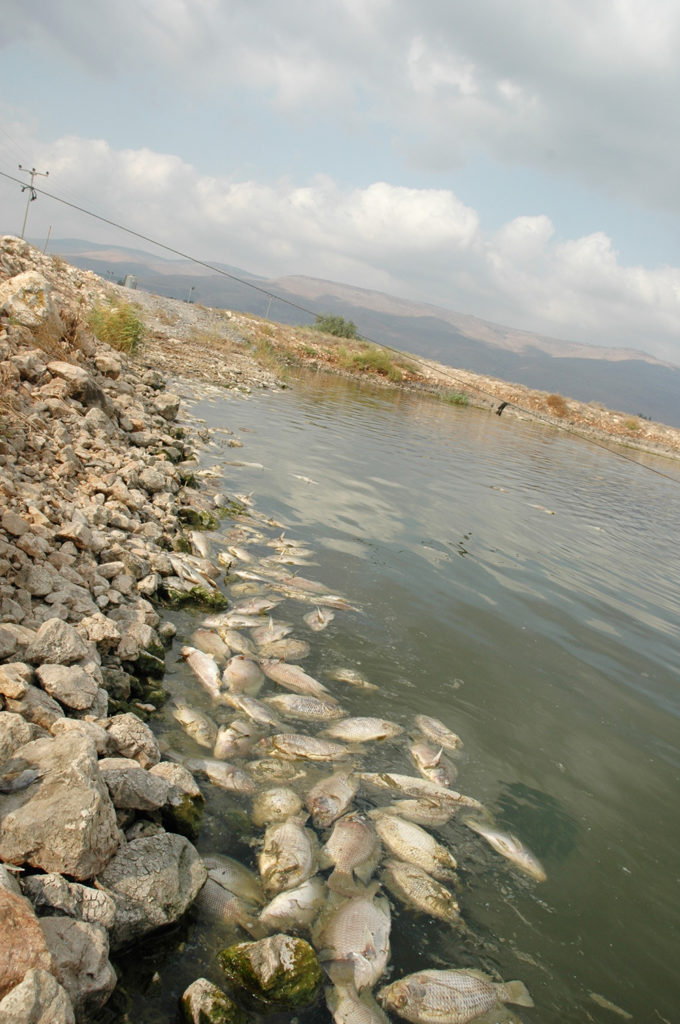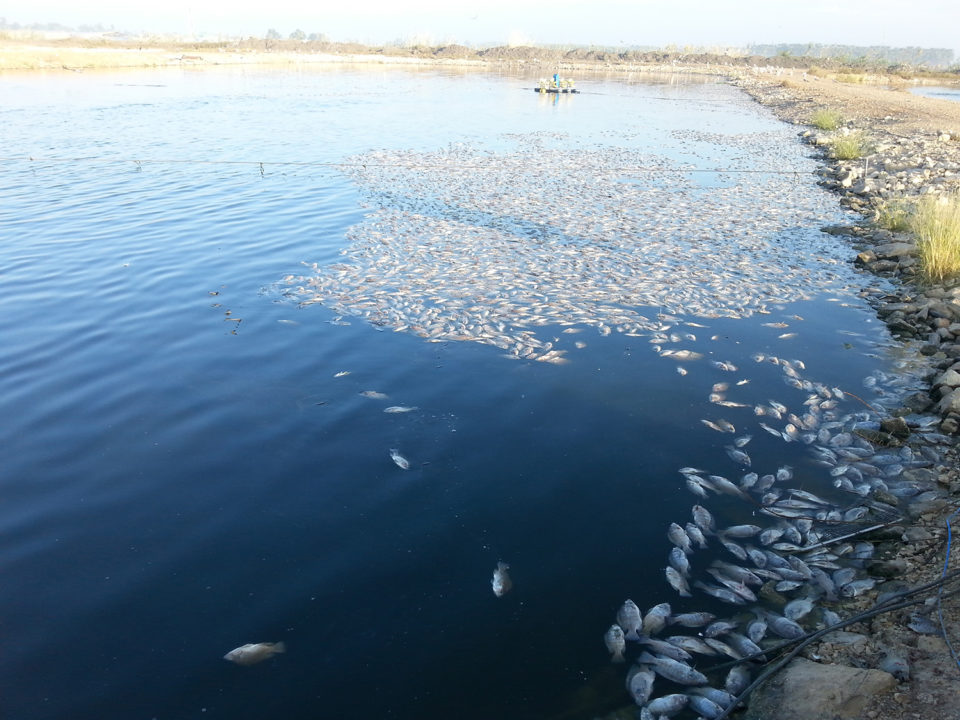Israeli researchers believe Tilapia Lake Virus could spread worldwide, and are working on a vaccine

Some 18 researchers at five institutions in four countries are hard at work trying to find a solution for Tilapia Lake Virus (TiLV), a contagion causing high rates of mortality in farmed and wild tilapia stocks in Israel, Colombia, Ecuador, Egypt and Thailand.
Tilapia is farmed in 80 countries worldwide but the leading producers of this protein staple are China, Indonesia and Egypt. There have been no reports of an outbreak of TiLV in China to date, but Han Han, executive director of the China Blue Sustainability Institute, said the Chinese government is being urged to begin field investigations.
“Right now we’re going through a high-temperature season during which tilapia easily get sick,” she noted. “Most symptoms reported from farms showed regular afflictions, not new or strange viruses, and we’ve heard of no particular fears or concerns about TiLV among our partners to date.”
Avi Eldar, a veterinarian with the Kimron Veterinary Institute in Bet Dagan, Israel, was one of the first to link tilapia mortalities to TiLV back in 2010. “At that time we saw tilapia catches decrease in the Sea of Galilee and suspected it was a virus,” he said. “We sent samples to reference labs and colleagues across the world but no-one could point towards a known agent.”
Eldar approached Eran Bacharach, a colleague and molecular virologist at Tel Aviv University and together they began examining the cytopathic effects of TiLV.
“In our initial experiments we induced the disease in cells and found that a small portion of the tilapia survived the infection,” Bacharach said. “Those fish were immune to further exposures of the virus, which told us that immunization, in principle, could be achieved. So we started thinking about ways to vaccinate the fish.”
With such high mortality rates, TiLV has real potential to be devastating to the industry.
That vaccination is years, not weeks, away, Bacharach said.
“We have a few approaches to inducing immunity to this pathogen in tilapia populations. One is keeping an attenuated strain of the virus alive with the ability to replicate, yet without its virulence,” Bacharach added. “Another is to generate an inactive virus, i.e. one unable to replicate, and expose the fish to that virus. A third approach, called Subunit Vaccine, involves expressing a limited set of the proteins derived from TiLV and exposing the fish to this.”

The researchers are also trying to identify tilapia strains or species that are less susceptible to TiLV. “In this strategy, we try to hybridize these less susceptible fish with commercially grown fish,” Eldar said.
The two researchers are collaborating with others at Columbia University in New York, Edinburgh University in Scotland and St. George’s University in Grenada, West Indies. Grant funding has been supplied by a U.S.-Israel Binational Agricultural Research & Development Fund and a fellowship from the Manna Center Program in Food Safety and Security at Tel Aviv University.
But more funding is needed, Eldar said, anticipating the challenge ahead. “This is a disease affecting poor countries in Africa and East Asia, not a disease found in Europe or North America,” he explained. “Tilapia, a major protein source and source of work in the developing world, is a food security issue, and not the next big issue for the fish industries in America or Europe, which is why more funding of our research is not readily available.”
Tilapia is the world’s second-most farmed fish, behind carps, estimated at between 4.5 and 5 million metric tons annually. Israel’s annual tilapia yields have plummeted up to 85 percent and similar mortality rates have been reported in Ecuador and Colombia. “For sure, with such high mortality rates, TiLV has real potential to be devastating to the industry,” Bacharach said.
“We were the first to report on this disease in Israel in 2014, the same year it was reported in Ecuador,” Eldar noted. “Since then, there have been more and more publications of outbreaks in Asia and South America and every week we’re approached by colleagues asking for information on how to culture and detect the virus. This leads us to believe that TiLV is occurring all over the world.”
While the Food and Agriculture Organization (FAO) says TiLV does not pose a risk to public health, it issued an alert through the Global Information and Early Warning System asking countries importing tilapia to intensify their diagnostics testing, enforce health certificates, deploy quarantine measures and develop contingency plans.
Author
-
Lauren Kramer
Lauren Kramer is a freelance journalist residing in Richmond, B.C., who has written extensively about seafood marketing for SeaFood Business magazine and SeafoodSource.com. Her work appears in a number of business journals, including Bellingham Whatcom County Tourism, USA National Culinary Review, Flavor & The Menu and many others.
Tagged With
Related Posts

Health & Welfare
Aquaculture viruses: An Atlantic salmon case study
Viruses often are the most potentially damaging pathogens in nature, affecting both wild stocks and farmed animals. Due to an Infectious Haematopoietic Necrosis (IHN) viral outbreak that occurred in Atlantic salmon in British Columbia, Canada some years ago, a vaccine for IHN was developed against this serious threat.

Health & Welfare
Aquaculture disease experts to download at GOAL 2016
At this year’s GOAL conference in Guangzhou, China, leading animal welfare and aquatic animal disease experts will share knowledge about how producers can gird their operations. EMS, EHP, streptococcosis and sea lice will be addressed, as will the latest in area management.

Health & Welfare
Born in Hawaii, SPF broodstock shrimp industry faces globalization
The next step for shrimp breeding will be developing animals that aren’t just disease-free, but increasingly resistant to multiple pathogens. The industry is globalizing, with suppliers setting up shop overseas. But its birthplace will always be Hawaii.

Health & Welfare
Biosecurity practices on fish farms need beefing up
Biosecurity measures and preventive strategies are essential in any biological production chain. Properly planned and implemented biosecurity programs will enhance animal health, production and economics.


